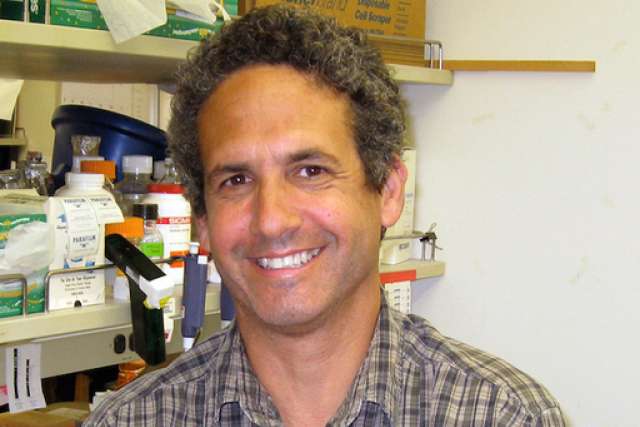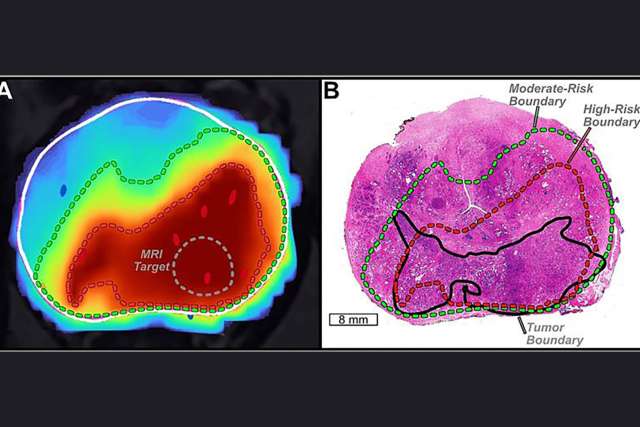Researchers at UCLA’s Jonsson Comprehensive Cancer Center have discovered a new cell signaling pathway that controls cell growth and development, a pathway that when defective helps promote the formation of several major forms of human cancer including lymphoma and leukemia.
The new pathway, part of a global DNA damage response, turns off 136 genes, including some that have are known to cause cancer because, unchecked, they can promote aberrant cell division.
“It’s important to make sure this pathway works correctly, because it prevents cells from dividing excessively” said Dr. Michael Teitell, a professor of pathology and laboratory medicine, a Jonsson Cancer Center researcher and senior author of the study. “When this pathway is defective, cancers can happen.”
The study appears in the Sept. 24, 2010 issue of the peer-reviewed journal Molecular Cell.
A widely used oral diabetes drug, Metformin, is known to activate the identified pathway and could possibly be protective against cancer in certain pathway defects. It’s been shown through epidemiological studies, Teitell said, that diabetes patients on Metformin have lower incidences of lymphoma and leukemia, possibly because the drug is regulating pathway operation. Additionally, new therapies that target the pathway could be developed to correct newly identified defects, thereby blocking the formation of cancer.
The study also revealed an unknown DNA damage response outcome. It is generally agreed that one of three things happen to cells in response to DNA damage: cells are temporarily arrested from growing so the damage can be repaired, cells go quiet and permanently stop dividing so they don’t pass on the DNA damage, or cells simply die, a process known as apoptosis.
Teitell’s study uncovered a fourth option: the DNA damage itself drives less mature cells to develop into more mature cells, in this case into antibody-secreting plasma cells, by turning off the 136 genes identified in the study. Defects in the newly discovered cell signaling pathway don’t allow cells to progress to their natural end point by blocking normal gene silencing. The less mature cells become stuck where they are, dividing too rapidly and potentially resulting in lymphoma or leukemia.
Usually DNA damage is thought to be associated with environmental factors, such as exposure to too much sun or to toxic chemicals. Chemotherapy also damages cell DNA. However, Teitell and his team discovered that a normal process, the creation of antibodies to battle infection, results in physiologic DNA damage that also activates the identified signaling pathway.
Teitell, in previous studies, discovered that the gene TCL1 can cause B-cell cancers, including various types of lymphomas, if it is not turned off at the right time in development. Activation of this new signaling pathway, in fact, is the mechanism that shuts the TCL1 oncogene down at the appropriate time. If a pathway defect develops, TCL1 and the other 135 genes remain elevated and cancer may arise.
B-cells are lymphocytes that play a large role in immune responses and they make antibodies in response to infection or vaccination. They divide at the highest rate in the human body, faster than skin, hair or cells of the gastrointestinal tract. In making antibodies to fight infection or in response to a vaccine, these rapidly proliferating cells undergo DNA damage in order to make better, more effective antibodies. The body, in effect, is trading off the potential harm caused by added DNA damage in order to effectively ward off a more immediate invader.
The rapid cell cycling process that occurs during antibody assembly and testing by the immune system needs to be halted at the right time, Teitell said. The body naturally turns off that process after about two to three weeks. A defect in the new pathway interrupts that natural stop signal and blocks the production of effective antibody-producing cells, the plasma cells.
Mara Sherman, who worked as a graduate student in Teitell’s lab and is the first author of the study, said the paper “reflects an exciting and emerging connection between DNA damage response pathways and cell differentiation.”
“Our work points to this DNA damage-response pathway as a potential, novel therapeutic target for the treatment of B-cell lymphoma,” Sherman said. “Combined with several intriguing recent studies, our work further suggests that pathways with established roles in genome maintenance may also drive the differentiation of stem and progenitor cell populations.”
Patients at risk for developing B-cell related cancers could be screened for genes that, when not turned off, are a signature indicating pathway defects. The pathway also could be playing a role in the development of lung, colon and other major cancer types, Teitell said.
Going forward, Teitell and his team will further study the pathway to detail all aspects of its operation so new therapies can be developed to fix it when something goes wrong.




